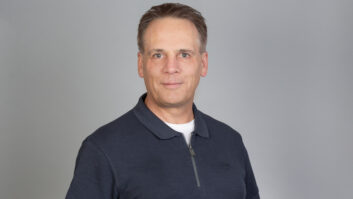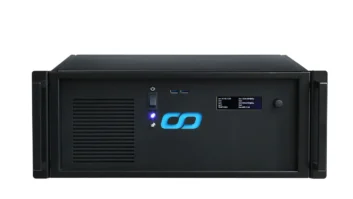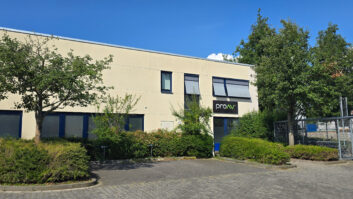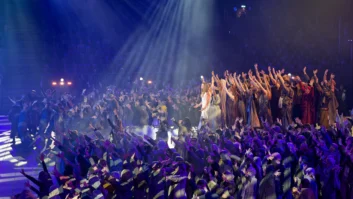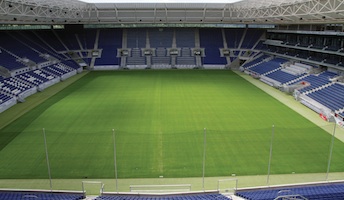
In just a few years, 1899 Hoffenheim has been catapulted from obscurity to the highest levels of German football. Paddy Baker visited its new stadium, the audio system of which combines voice evacuation and PA functionality.
It sounds like the stuff of boys’ stories. A small amateur football club is taken under the wing of a multimillionaire benefactor, who turns it professional, gives it an injection of new talent and takes it to the top of the country’s highest league.
Except in this case it’s true. In the early 1990s, German club 1899 Hoffenheim was playing in the eighth division Baden-Württemberg A-Liga. Thanks to the financial backing of Dietmar Hopp, one of the founders of software giant SAP, the club has made steady progress up the national leagues, turning professional in 2007. The following year, Hoffenheim joined German football’s highest league, the Bundesliga; it even reached the top of the table early in the season, before an injury to its star striker led to it finishing the season in seventh place.
Not surprisingly given its rapid rise in status, the club required a new stadium.
Built at a cost of €60 million, the Rhein-Neckar Arena, at Sinsheim in south-west Germany, seats around 30,000 spectators, compared with the capacity of 6,000 or so of its predecessor. The stadium opened in January 2009, in time for the second half of the team’s 2008-09 fixture calendar. It will see international service in 2011, when it will host matches in the FIFA International Women’s Cup.
Sound system design work started in 2007, and it was decided to combine the PA and VA functions into a single system. Roland Kruck, director of technology at EVI Audio fixed installation partner Lindenmeyer, explains: “Since EVI Audio started to configure a new way of planning big arenas for the 2006 world soccer championships, the 100V and pro-audio networks are melded into one.”
Complete package
Oliver Sahm, European director of the tech support team at EVI Audio, adds: “We said, if you do a certain combination of Dynacord voice evacuation and paging in combination with an Electro-Voice PA system, you can create a full package that can be commissioned as one system that covers both worlds. That’s what we talked about with the consultant and, of course, they were happy about it, because it can save a lot of money; you don’t need a double installation, and you get a nice package for the owner of the stadium.”
Kruck explains: “Everything is joined together in intelligent ring networks controlled from the audio production room and in the background from the overall supervising DPM4000 digital paging manager, which controls all the functions of the evacuation system. Three air-conditioned racks with amps, electronics and UPS supply the public areas of the inner arena. Another three racks with 100V technology supply the rest of the building.”
All the audio signals pass through the central control room. A Dynacord P64 digital audio matrix manager sits at the head of the network. All signals from the control room, including background music for VIP rooms, is fed into the network and distributed through the amplifier rack into the different zones. In the event of a failure or an interruption in the mains supply, a small UPS kicks in and the system is kept alive – with all the settings retained within the P64.
In the stadium bowl, the matrices and amplifiers for the speakers are on a ring network of fibre optic cable, so that the signal can still reach all the amplifiers if a connection between network nodes fails. A ‘watchdog’ network supervision program monitors the speakers and checks that they are working properly. (This was tested during the commissioning process; the inspecting officials disconnected speakers and checked that this was detected by the system.)
Network backup
There are two CobraNet networks: if the primary CobraNet fails, the secondary network in the second ring can take over. In these circumstances, audio is given priority over data in the secondary network, so, says Kruck, while the VU meters in the control room may not register sound levels with complete accuracy and instantaneousness, the audio signal is still getting through. In addition, the wiring of the amplifiers and speakers is distributed in such a way that even the complete failure of one of the three racks would not result in the audio failing within a section of the stadium.
There are a total of 42 Electro-Voice FRX+940 PI weatherised speakers around the inner arena, plus some mid-high horns on delay lines to improve speech intelligibility for the top few rows of seating. The FRX+940 PI is a 15in coaxial two-way horn-loaded speaker. “These speakers provide real full-range frequency response for music reproduction and have good directivity – because of the coaxial horn construction – and so also provide nice direct sound for the voice evac announcements in the main bowl,” says Sahm.
The approach to sound reinforcement on the playing field has been carried out in other EVI stadium installs, he points out: “You take one long side of the stadium as time-zero sound-source location, and the opposite side can be properly delayed if you have to use it simultaneously with the sound system on the grandstands. Where it is always critical is on the sides behind the goals, where the delay settings are a compromise between the different delay times across the depth of the tribunes [balconies]. It’s better to do it this way than to delay from both sides, where you have no reference point that you can delay to.”
He has a recommendation for improving intelligibility: “As long as it is not really needed [to do the opposite], make separate announcements – make one on the grandstand and make the same announcement on the pitch right afterwards. Some operators follow this advice, some say, ‘No, we’ll take this compromise and do it all at once.'”
Kruck adds that this method of using horn-loaded speakers is the only way to overcome the reverberation times of a stadium such as this – five to six seconds empty; around three seconds when it’s full of people – without using line arrays.
Sahm picks up the theme: “Otherwise you need a longer line array to get control in the vertical plane through the main frequency ranges. But in many cases the line-array solution is not as cost-effective as the horn-loaded one. It has other advantages, but it costs more. Line arrays come into play in places like Berlin for example [the Olympic stadium, which hosted the 2006 World Cup Final], which is a 77,000-seater – but you always have to look at the geometry of the grandstand. What is the vertical angle you have to cover from the possible speaker mounting positions? This defines the length of your fully curved line array. If this becomes too wide because of the shape – it doesn’t matter if it’s a large or a small stadium – then the horn-loaded solution might be the better one, but you would need a big horn to get the directivity at lower frequencies.”
Paging zones
A total of four Dynacord digital paging consoles handle paging in individual zones in the bowl, as well as areas inside the building. There are 30 separate zones in total, which can be paged individually or in any combination.
Another advantage of this combination of the voice evac and pro-audio systems is that user-tailored interfaces for the different users of the system can be created within IRIS-Net, EVI Audio’s software package for configuring, controlling and monitoring PA systems. “So the firefighter, police officer or security guy has a standard paging station layout that they’re used to elsewhere – they press a button, they make an announcement,” explains Sahm. “The operator in the sound control room has a console [a Midas Venice 240], and he has a computer with a screen where all individual access, and the graphic user surfaces, are programmed for each system user. All the layout is done within IRIS-Net – you can provide all the buttons and faders that he wants to have to operate the pro-sound system.”
Within the IRIS-Net software another interface is available for system administration and configuration – so, for instance, amplifier temperature can be monitored to provide early warning of an imminent failure. Different software layers, password protected, ensure that no one has access to functions they should not be using.
1899 Hoffenheim, meanwhile, has recently been in the top five of the Bundesliga and has qualified for the quarter-finals of the German Cup. Whatever its footballing fortunes bring over the coming years, it can be confident that it has a home that looks – and sounds – fit for a team at the very top of its game.

